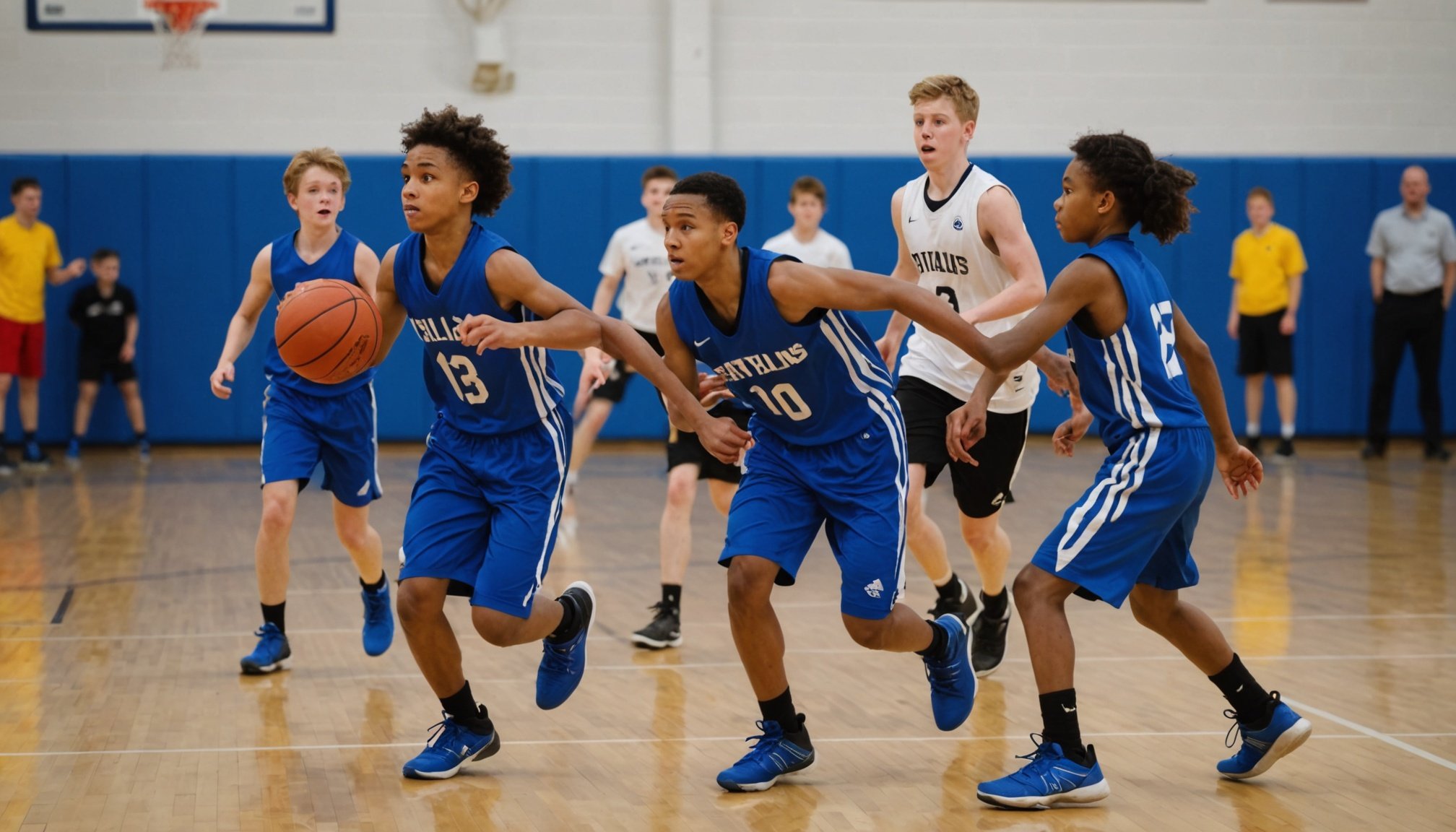Unlocking Potential: The Advantages of Multi-Sport Involvement for Young Basketball Players in the UK to Multi-Sport Involvement
When it comes to the development of young athletes, particularly in the UK, the debate around specialization versus multi-sport involvement is a heated one. For young basketball players, engaging in multiple sports can have a profound impact on their overall development, both on and off the court. In this article, we will delve into the advantages of multi-sport involvement and why it is crucial for the holistic development of young basketball players.
Physical Health and Injury Prevention
One of the most significant benefits of multi-sport involvement is the enhancement of physical health and the reduction of injury risk. Here are a few key points to consider:
Have you seen this : Mastering Zone Defense: Essential Offensive Tactics for UK Basketball Coaches
-
Diverse Movement Patterns: Different sports require different movement patterns, which can help prevent overuse injuries that often come with specializing in a single sport too early. For example, a basketball player who also participates in rugby union or soccer will develop a broader range of movement skills, reducing the repetitive strain on specific joints and muscles[4].
-
Cross-Training Benefits: Engaging in multiple sports can act as a form of cross-training, improving overall physical fitness. For instance, the endurance built through playing soccer can enhance a basketball player’s stamina during long games and practices.
Also to read : Top Techniques for UK Basketball Players to Enhance Their Shot Arc Effectively
-
Strength Conditioning: Participating in sports like rugby or football can help young athletes develop strength and power, which are essential for basketball. Here is a comparison of how different sports can contribute to strength conditioning:
Sport Strength Conditioning Benefits Rugby Union Develops upper body strength, core stability, and explosive power Football Enhances lower body strength, agility, and endurance Basketball Requires a combination of upper and lower body strength, as well as explosive power and agility
Skill Development and Versatility
Multi-sport involvement is not just about physical benefits; it also plays a crucial role in skill development and versatility.
-
Transferable Skills: Many skills learned in one sport are transferable to another. For example, the hand-eye coordination developed through playing tennis or cricket can significantly improve a basketball player’s ability to catch and pass the ball.
-
Strategic Thinking: Engaging in different sports helps young athletes develop strategic thinking and problem-solving skills. For instance, the tactical aspects of soccer can improve a basketball player’s understanding of team play and positioning.
-
Adaptability: Multi-sport athletes learn to adapt quickly to new rules, strategies, and team dynamics, which is invaluable in a fast-paced sport like basketball.
Mental Health and Well-being
The mental health benefits of multi-sport involvement should not be overlooked.
-
Reduced Burnout: Specializing too early in a single sport can lead to burnout. Participating in multiple sports keeps things fresh and exciting, reducing the risk of mental fatigue.
-
Social Benefits: Engaging in various sports provides opportunities to meet new people and form different social circles, which is crucial for the mental well-being of young athletes.
-
Resilience Building: Experiencing different competitive environments helps build resilience. Here’s what Dr. Joe Eisenmann, a sports scientist, has to say about this:
“Multi-sport athletes tend to have better coping mechanisms and resilience. They learn to handle failure and success in different contexts, which is essential for long-term development in any sport.”[4]
Long-Term Development and Performance
The long-term benefits of multi-sport involvement are perhaps the most compelling reason for young basketball players to engage in multiple sports.
-
Early Specialisation Risks: Early specialization can lead to a higher risk of overuse injuries and burnout. The American Academy of Pediatrics recommends that children should not specialize in a single sport until they are at least 12 years old.
-
Holistic Development: Multi-sport involvement ensures holistic development, encompassing physical, mental, and social aspects. Here is a comparison of the long-term outcomes for athletes who specialize early versus those who engage in multiple sports:
Aspect Early Specialization Multi-Sport Involvement Injury Risk Higher Lower Burnout Risk Higher Lower Skill Versatility Limited Enhanced Mental Health Potential for negative impacts Positive impacts Long-Term Performance Often peaks early, then declines Sustained performance over the years
Practical Advice for Parents and Coaches
For parents and coaches looking to encourage multi-sport involvement among young basketball players, here are some practical tips:
-
Encourage Exploration: Allow young athletes to try out different sports to find what they enjoy. This can be through school sport programs, local clubs, or community centers.
-
Support Diverse Participation: Be supportive of their participation in multiple sports. Recognize that this is a positive step towards their overall development.
-
Focus on Fun: Ensure that the primary focus remains on fun and enjoyment. This will help keep young athletes engaged and motivated.
-
Collaborate with Schools and Clubs: Work with schools and sports clubs to provide opportunities for multi-sport participation. For example, the University of Birmingham offers various sports programs that cater to young athletes interested in multiple sports.
Examples and Success Stories
There are numerous examples of successful athletes who have benefited from multi-sport involvement.
-
Coco Gauff: The young American tennis star, Coco Gauff, is a prime example. Before focusing solely on tennis, she participated in various sports, which helped her develop the physical and mental resilience needed to excel at the highest level[4].
-
British Basketball: The British Basketball Federation encourages young players to participate in multiple sports as part of their development programs. This approach has led to the emergence of well-rounded athletes who excel not just in basketball but also in other sports.
In conclusion, multi-sport involvement is a cornerstone of the holistic development of young basketball players in the UK. It offers a myriad of benefits, from enhanced physical health and skill development to improved mental well-being and long-term performance. By encouraging young athletes to engage in multiple sports, parents, coaches, and sports organizations can help unlock their full potential and set them up for success both on and off the court.
As Dr. Neeru Jayanthi, a sports medicine specialist, succinctly puts it:
“Multi-sport athletes tend to be more resilient, have better overall athleticism, and are less likely to experience overuse injuries. It’s a win-win for their development and their future in sports.”[4]
By embracing the concept of multi-sport involvement, we can foster a new generation of young athletes who are not only skilled in their chosen sport but also well-rounded, healthy, and happy individuals.






